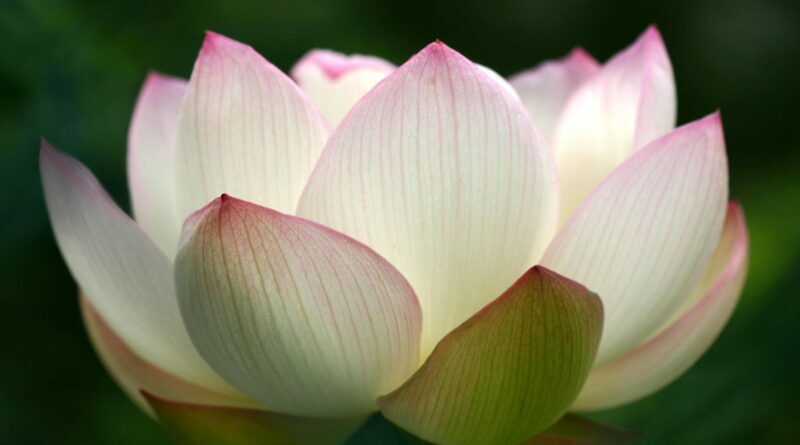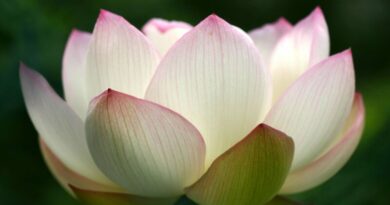DE-THINKING
De-thinking
Meditation is not simply an exercise in how to stop thinking. Instead, it’s an exercise in gaining a sense of time and place in your thinking: learning when to think, when not to think, and how—when thinking’s appropriate—to think in the most useful ways.
As you meditate, you start noticing the power of your perceptions. The labels you apply to things, the way you visualize things, really have a huge influence over what you see. You can see this clearly with the breath. We have certain preconceived notions of how the breath comes into the body, what we have to do in order to bring it into the body, how the process of breathing relates to the different parts of the body, and then we breathe in line with that. And many times it’s a caricature of what’s actually going on. So we have to learn to look at the process in other ways. Consciously change the way you conceive of your breathing; see what happens. At the very least it’ll give you a good insight into the relationship between mental events and physical events. It’s not always the case that the mind is just reacting to its experiences. Sometimes it’s shaping its experiences, too. If we don’t get a sense of how we shape things, we never really get a chance to look into the mind.
For starters there’s the concept of the breath not as the air coming in and out of the lungs but the energy flow in the body. Some people have problems with this; others have no problems at all. But allow yourself to think in those ways and see what happens. And instead of thinking of the body pulling the breath in, remember that your primary experience of the body is breath, an energy flow. Our perceptions tend to solidify that, and so we often think that the solid parts of the body are our primary experience of the body, and that breath is something secondary. Actually, it’s the other way around. The sensation of energy is primary. So allow yourself to think in that other-way-around. Your sense of the solid body is sitting here in the breath, in the process of breathing. Whatever you perceive as an immediate, primary experience of “body,” think of it as breath.
If you’re having trouble with the breathing, if your breath seems constricted or tight, remind yourself of this, and it’ll open up a lot. And then you can start asking other questions about how the breath comes in: “Where does it come in the body?” “Where are the entry points of the breath?” “What kind of energy comes in, goes out?” “What kind of energy is there already in the body and stays there?” “How are the in-and-out energy and the staying-there energy related?” You have to learn how to question these things. Otherwise you won’t see anything. The Japanese Zen master Dogen had a phrase for this; he called it “de-thinking thinking”: the questions you ask that take apart your assumptions. He has a nice passage where he says, “Is the body sitting in the mind, or is the mind sitting in the body?”, “Is the sitting sitting in the sitting?” These questions may sound strange, but then many of the pre-verbal assumptions that shape our experience of the present are pretty strange, too. It takes some pretty strange questions to notice those assumptions, to dig them up, to take them apart.
Even as you’re just getting acquainted with the breath it’s good to ask these kinds of questions so that you know where you’re settling down and can really look at what you’re experiencing in the present moment. Most of the time there will be a filter on that experience, but you can learn how to change the filters and find which filters are more useful than others, which concepts are more useful than others.
Part of this means using your ingenuity, part means using your powers of observation, and together they create a sense of interest: “What really is going on here?” As you get more and more absorbed in exploring these things, you find it easier and easier for the mind to settle down. And without even thinking about them, you’ve got what they call the four bases of success. There’s the desire, the interest, the persistence as you keep after it, the close attention you’re paying to it, and then the ingenuity you’re putting into the questions you ask. All these things contribute to concentration, help the concentration get settled, get solid, get very clear. It’s this ability to ask questions that makes all the difference in your practice.
As you work with the breath in this way, the questions start building up to the Four Noble Truths: “Okay, where exactly is the stress?” “What’s causing it?” You see more and more subtle levels of stress simply by raising that question. If you don’t raise questions you’ll just sit here – in, out, in, out, in, out – and it becomes very mechanical. After a while you’ll wonder what you’re doing, because you’re not doing anything. So ask questions.
Sometimes the questions should be aimed at getting the mind to settle down. If the mind isn’t settling down, ask yourself, “What’s going on?” “How is the way I relate to the breath a problem?” – because the breath itself normally is not a problem. It’s your relationship to it that’s the problem: your preconceived notions about it, the way you force yourself to breathe in this way, breathe in that way, your preconceived notions of what it means to be concentrated, how much tension you have to create in order to keep the mind present. You have to catch yourself doing these things to see where there’s unnecessary tension, unnecessary stress that’s making the process of meditation uncomfortable and disagreeable, and then learn to relax it. Sometimes it requires changing the point of your focus; sometimes it requires changing the quality of your focus; sometimes it requires changing your concept of what it means to be focused: “Who’s focusing?” “Is the mind in one spot and then trying to focus the mind in that one spot on another spot?” “Well, what does that do?” “Can you think of the awareness as already there at the spot you’re hoping to focus on?” When you ask questions like this, the mind begins to settle down as you find ways of making the experience of the present moment more pleasant, easier to deal with.
Then once the mind is settled down, give it some time to stay there. This means that the next question is, “How do you keep it there?” “Which parts of the process were necessary to establish the focus and then once it’s focused, which parts can you let go?” “Which parts do you have to hold onto in order to maintain that focus?” Creating the focus and maintaining it are two separate processes. You learn this by learning how to ask those questions so that you notice things. Then when you learn how to maintain it, the next questions are, “Can you maintain it in all situations, this level of steadiness, this level of being centered?” “What gets in the way?”
When you start seeing the things that get in the way, that’s the beginning of what might more directly be called insight. And the same holds when you’ve been sitting very quietly for a long period of time – maintaining that focus, maintaining that focus – until it seems more and more second nature. They question is, “Can you detect some subtle stress in that focus?” “And then what goes along with that stress?” “What vagrant movements in the mind are creating it?” Or, “What persistent movements in the mind are creating it?” You have to watch for both. This way you can give rise to insight in the process doing concentration.
The Buddha never separated concentration practice from insight practice. Always he said that you develop tranquility and insight in order to attain concentration, and then once the concentration is there, you use the concentration to develop further tranquility and further insight. The two are all part of the same process.
But it comes down to learning how to ask the right questions about the present moment and learning to ask which questions should be asked at which time, so that when the mind needs a place to settle down you’re not asking all sorts of insight questions; you’re asking the tranquility questions: “How can I keep this going, keep this going, keep this going?” “Or, if I can’t even get there yet, what can I do to get there?”
So learning how to ask questions is an important skill in the practice, as it is in any skill. You have to be observant. You have to notice things, and a lot of times that means framing questions in the mind. The questions deal with issues of the Four Noble Truths: “How can we get the Path together?” “How can we maintain the Path, make it more subtle, make it stronger?” “How we can use those factors of the Path, the qualities you’re developing in your mind, the clarity of awareness, the steadiness of awareness…How can they be used to understand the questions of suffering and stress?” These are good questions.
But even with good questions you have to have a sense of time and place. And it’s important to keep your questions limited to what’s absolutely necessary. I once received a letter from a monk who had 600 Dhamma questions he wanted me to answer. And my feeling was if you that many questions, none of them are really life-and-death questions. So I didn’t feel motivated to answer. If someone writes a letter with one question, I believe that person.
So as you’re sitting here, try to sort out which are the most important questions for helping the mind right now? Everything else you can let go, put aside. The Buddha chose to answer only those questions that would lead to Awakening, lead to disenchantment, lead to clear seeing and knowing, right here in the present moment. An important part of the practice is learning which questions qualify and learning how to focus your intention on those, because those are the ones that really give results.



